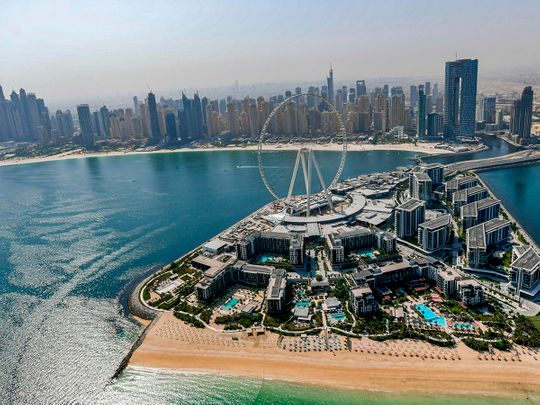
What a difference a year makes. This time last year, the writing was on the wall. It was all but decided that the property market was a spent force, on the verge of being wiped out by the great pandemic. Its residents should have succumbed to nerves from the fearful haze of pain that the downturn had brought ashore.
Mass hysteria is a terrible force - and yet Dubai has always managed to escape it by some margin: it even managed to scale the sky during the depths of the last depression. The city has always managed to meet confusion and panic with grit. It is almost as if the city provides its residents with massive doses of a supplementary vitamin: the sense of belonging to something unique, cosmopolitan, mighty and unparalleled.
Today, the verve and the groove is back. Lines outside every restaurant - prosperity, it seems, creates its own breadlines - state what is obvious to the resident. Dubai is nothing like Paris, or New York or London. Its physical majesty serves as a magnet for the world’s best and brightest, but look closer, and the city’s evolution across its various districts signify the development of an expanse that is virtually like no other.
A collection of neighbourhoods
The city is literally a composite of tiny neighborhood units. There are, of course, big districts like the Downtown, Business Bay, Dubai Marina and Jumeirah Village, as well as Emirates Living, each of which has some characteristic. But the curious thing about Dubai is that each large geographical unit is composed of countless small neighborhoods, each of which is virtually self-sufficient. South Marina houses a different feel, District 13 of Jumeirah Billage has a more “partyesque” atmosphere, whilst the local coffee shops of Al Quoz talk of a more somber and academic zeitgeist.
Each area is a city within a city within a city, testifying to its entrepreneurial verve, not merely just in the financial sense, but more holistically, where people no longer feel that the city is one large construction site but rather an agglomeration of an indestructible force. The Expo is already cementing the status of the city as a force of creativity, diversity and opportunity, setting the stage for others to scramble to create opportunities that Dubai has already long surpassed.
A solution for any headwind
As exhibitions return and tourism proliferates, the backbone of the city (which is its infrastructure and real estate), serves to accommodate the legions of people entering its gates, ready to imbibe ideas and infuse it with its local cultural flavor to create an admix of output virtually unseen anywhere else on the planet.
Much has been written about the slew of reforms put into place over the last two years to revitalize the city anew, but Dubai has always possessed the magic dust that it sprinkles on its edifice every time headwinds occur. The city - known for its citizen, commuter, tourist and resident/expat - has sought to blur the distinctions in recent years and as it has done so, has created opportunities anew , at all ends of the market strata, stimulating activity where commentators thought none existed.
Conversations once again are dominated by capital gains and multiplying values, but these animal spirits never really left the citizen or the resident, the ranks of which have multiplied over time, giving the city its sense of invulnerability and poise. As the gates of Cityscape open to welcome the world again, gone are the lamentations of oversupply and despair, replaced by limousines and millionaires jockeying for their places in the race that the city provides once again for those willing to dare to create.
This race - the race between opportunity and security, between optimism and creativity is one of symbiosis - perfectly illustrated by the city. The riddle of in steel and stone is one that Dubai has managed to navigate successfully, showing that brotherhood is as lofty an ambition as the one to create skyscrapers. It is rapidly becoming the capital of opportunity and mobility, housing the deliberations that will shape the world anew.









